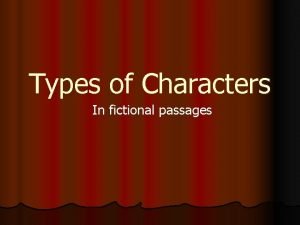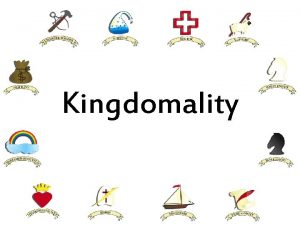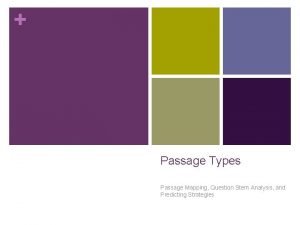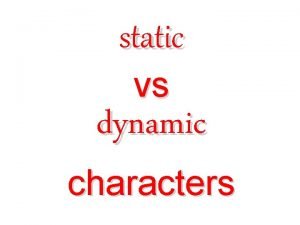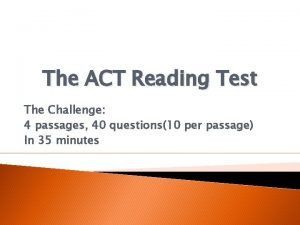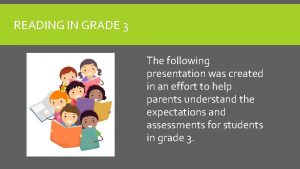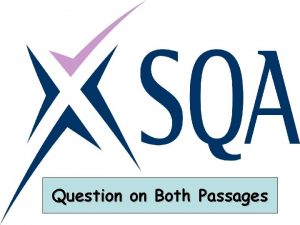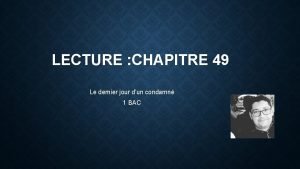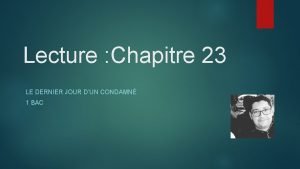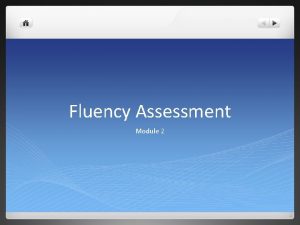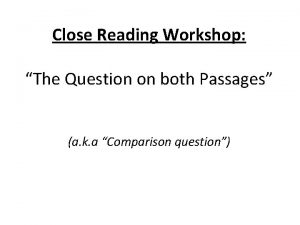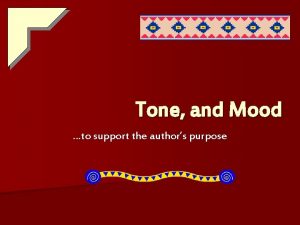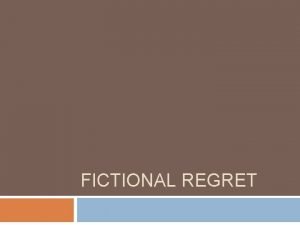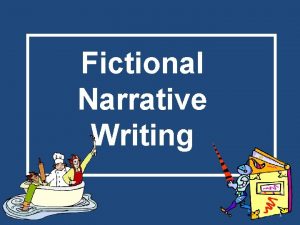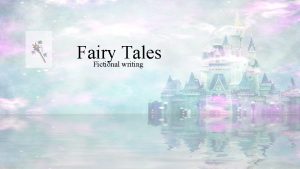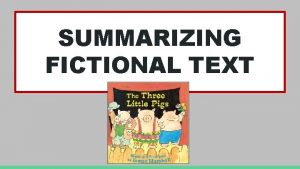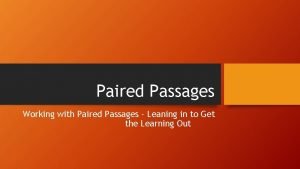Types of Characters In fictional passages What is












- Slides: 12

Types of Characters In fictional passages

What is a character? l. A character answers the “who” in a passage. l The characters are the people or animals that are involved in the story.

Types of Characters There are several different types of characters that make up a fictional story. l These are: l l l l l Main characters Supporting characters Protagonist Antagonist Flat characters Round Characters Static Characters Dynamic Characters

Main Characters l Main characters in a fictional passage are who the story is mainly about. l The reader usually knows a lot about the main character because they are fully developed characters. l For example, in Twilight the main characters are? Bella and Edward

Supporting Characters l Supporting characters in fictional passages play a much smaller role than the main characters. l The reader does not know a lot about these characters because they are only seen occasionally in the story. l For example, in Twilight some supporting characters would be? Bella’s dad, Edward’s family, Jacob

Protagonist l Every fictional story has a protagonist. l The protagonist is the “good guy” of the story. l The protagonist is usually always good, and since good usually defeats evil, the protagonist usually wins by the end of the story. l In Shriek, who are the protagonists?

Antagonist l Every fictional story has an antagonist. l The antagonist is the “bad guy”. l The Antagonist is always Against the protagonist, or good guy. l Since good usually triumphs, the antagonist usually loses. l In Shriek, who is the antagonist?

Round Characters l Round characters are fully developed characters, having many characteristics. l The reader knows the thoughts and feelings of round characters. l Round characters can be good people who have bad thoughts or make bad choices, and therefore are more like real people. l Who are the round characters in Shriek?

Flat Characters l Flat characters are the opposite of round characters. l Flat characters are not fully developed and only show the reader one characteristic. l A flat character can be either always funny, kind, mean, or lazy. l Who are the flat characters in Shriek?

Dynamic Characters l. A dynamic character changes from the beginning of the book to the end. l A dynamic character may start off mean and grouchy, and end up kind by the end of the book… such as Scrooge in A Christmas Carol. l Who are the dynamic characters in Shriek?

Static Characters l l A static character does not change during the story. A static character starts the fictional passage as good or bad, smart or lazy, and stays that way throughout the book. Scrooge’s employee, Mr. Cratchet, is an example of a static character b/c he begins the book a kind, hardworking man and ends the book exactly the same. Who is a static character in Shriek?

Independent Practice l Now that we have discussed the types of characters found in every fictional book, complete the practice sheet on your own. l Be sure to label the characters in terms of type, and then explain your answer for each.
 Types of charachters
Types of charachters Fictional characters personality types
Fictional characters personality types Passage mapping
Passage mapping Round flat static dynamic
Round flat static dynamic Act reading passages
Act reading passages Rta released passages
Rta released passages Benefits of scanning reading
Benefits of scanning reading Which fact is mentioned in both passages
Which fact is mentioned in both passages Le dernier jour d'un condamné chapitre 49 examen corrigé
Le dernier jour d'un condamné chapitre 49 examen corrigé L'histoire de friauche
L'histoire de friauche Cbm reading fluency passages
Cbm reading fluency passages The author of both passages agree that
The author of both passages agree that Mood passages examples
Mood passages examples
